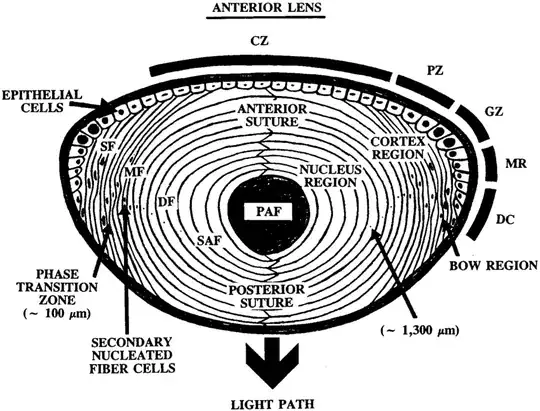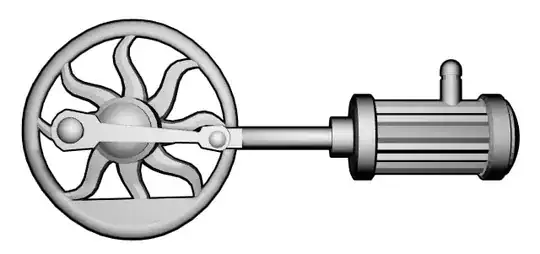The EYES Have It
Introduction
The bicyclops is a symbiotic creature, descended from a disc shaped creature that made use of incredibly common magnetic minerals to repel predatory creatures; and another, multilimbed creature that evolved to make use of the same magnetic minerals in its mating behaviours. The common occurrence of the proto-disc creatures in the vicinity of the proto-bicyclops creature put the two in regular contact. Over the course of evolutionary history, the discoids became encompassed within the bicyclops, the latter coming to control the former's reproduction via pheromone mediation, allowing the discs to reproduce as a part of the composite creature.
Physiology
The main skeletal structures of the bicyclops are the bony rims of the symbiotic bio-wheel and the rigid limbs that hold the external bio-wheels in place.
The best way to understand the mechanism by which the bicyclops locotmotes is to examine the structure of the ocular lens of the terrestrial animal.
Essentially, the lens is a roughly circular, almost wheel like, structure suspended in the anterior portion of the eye. It comprises multiple layers, notably an outer layer of epithelial cells, a middle layer of nucleated fibre cells and a central nucleus of clear fibre cells that lack organelles. As the lens matures, epithelial cells migrate towards the centre, becoming fibre cells and adding new layers to the lens.

With that image in mind, the bicyclopian bio-wheel design is similar. Rather than a transparent lenticular nucleus, these creatures have layers of fibre cells that contain particles of magnetic mineral, arranged in such a way that they are capable of interacting with magnetic objects outside of themselves. Of note, while the human lens is perhaps 0.75cm, the bicyclopian bio-wheel can be up to a metre in diameter!
Mechanics
Within the host creature, the central gyre --- analogous to the eye's lens --- is rotated by ciliary action within the gyre's nutrient rich capsule. Of note, during the fetal stage of life, the gyre is immobile, and it is not until rather late in fetal development that the gyre finally separates from its surrounding epithelial layer, thus becoming freely mobile.
The capsular fluid acts as a buffer, as lubricant for the gyre, and as the medium in which nutrients and wastes are transported and also into which partially differentiated fibre cells migrate until they attach to the gyre for growth or repair.
Within the symbiotic portion of the bio-wheel, a similar capsule like arrangement is to be found, but rather than ciliary action causing the gyre to spin, in this case, fluid pumps act against ridges along the bony rim. Thus the central portion of the symbiote remains relatively stable whilst the rim and external tyre rotate around it, activated by the host's magnetic gyre.
The external appearance of the tyre is of an extremely tough bony plate surmounted by a somewhat spongy and fibrous hoof-like plate which is used to dig into the earth and provides locomotive traction.
Manouvres such as turning, leaping and so forth are accomplished primarily by spinal flexion and by weight shifting. Of note, distant ancestral creatures once had six independently mobile limbs. Modern bicyclopes retain independent mobility only in their forelimbs. The left and right medial and posterior limbs have become fused masses of bone, looking much like a wishbone's bifurcation.
Interface
The interfaces between host bicyclops and symbiotic bio-wheel is most interesting. The host and symbiote have together evolved a sort of 'ball and socket' joint, familiar to terran anatomists as the hip joint. Unlike the hip, there are no connexions between 'leg' and 'trunk'. Rather the ball protruberance of the symbiote is partially surrounded and secured by the sockets of the bilateral limbs. The junction is lubricated by a kind of thick gelatinous substance which adheres well to the smooth fibrous bearings. Numerous small orifices transfer chemical signals, nutrients, wastes and reproductive fluids between the wheels and host body.





